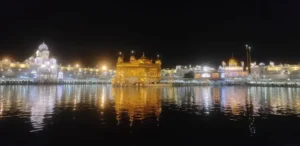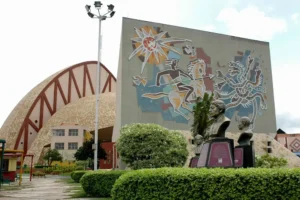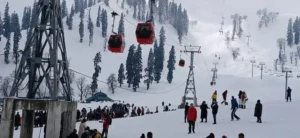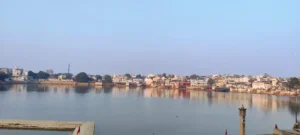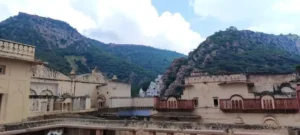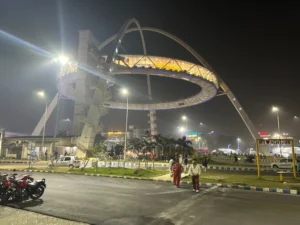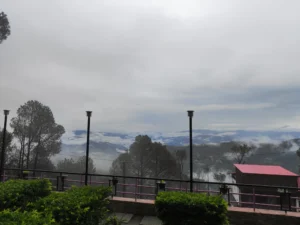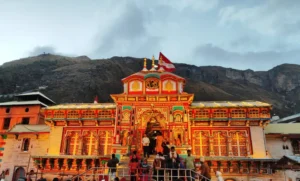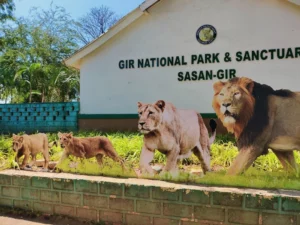Jaipur, the capital of Rajasthan, is a city that blends history, culture, and architectural grandeur like no other. Known as the “Pink City” for its distinct terracotta-hued buildings, Jaipur is a vibrant destination brimming with royal palaces, majestic forts, bustling bazaars, and rich heritage.
Sawai Jai Singh II, the Kachhwaha Rajput ruler of Amer, founded the city in 1727. The city is gets it’s name after him. Jaipur is a popular tourist destination in India, forming a part of the west Golden triangle tourist circuit along with Delhi and Agra.
Whether you’re exploring the opulent City Palace, admiring the intricate designs of Hawa Mahal, or witnessing the grandeur of Amer Fort, every corner of Jaipur tells a story of its glorious past. From mouthwatering Rajasthani cuisine to lively cultural performances, Jaipur offers an unforgettable experience for travelers seeking history, tradition, and adventure.
Travel from Delhi to Jaipur:
By Road (Car/Taxi/Bike): One has to cover a distance of approx. 270 km. NH48 is a popular, maintained highway that provides a smooth drive.
By Bus: One can also opt for bus, operated by Rajasthan State Road Transport Corporation (RSRTC) or private operators.
By Train: Train-lovers can opt from various train options, departing from New Delhi Railway Station and reach Jaipur Junction.
Flight: You can also take a flight from Indira Gandhi International Airport (DEL) in Delhi to Jaipur International Airport (JAI).
Journey Through the Pink City’s Rich History
Amer Fort: A Majestic Fortress of Royal Elegance and Timeless Beauty
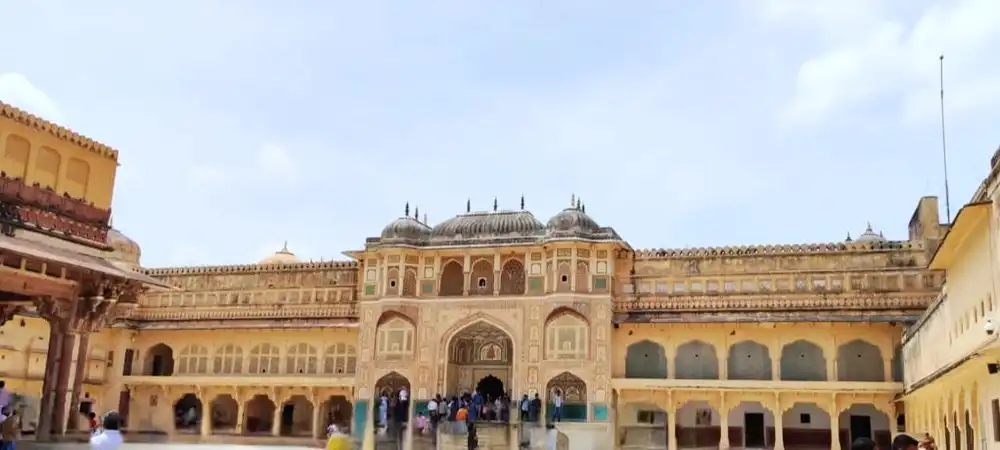
Amer Fort, also known as Amber Fort, is one of the most iconic and magnificent forts in Rajasthan, India. Maharaja Man Singh I built the fort in the late 16th century, as a residence till 18th century.
The fort’s architecture is a blend of Hindu, Mughal, and Rajput styles, with a strong emphasis on symmetry, grandeur, and intricate artwork.
The fort complex has 4 main sections, namely Diwan-i-Aam (Hall of Public Audience), Diwan-i-Khas (Hall of Private Audience), Sheesh Mahal (Mirror Palace), and Sukh Niwas (Pleasure Palace).
Maota Lake, situated at the base of the fort, adds to the charm of the fort’s surroundings. The fort used the lake as a source of water, and it still serves as a spot for boating today.
Timings: Open daily from 8:00 AM to 6:00 PM. There is a nominal entry fee, with elephant ride and guided tours being extra.
One can also enjoy Light and sound show every evening at the Amer fort, which narrates the history of the fort and Jaipur’s royal past with stunning visuals and music.
Timings & Details:
Hindi Show: 7:30 PM – 8:30 PM
English Show: 6:30 PM – 7:30 PM
Duration: About 50 minutes
Venue: Kesar Kyari, Maota Lake (inside Amber Fort)
Ticket Prices:
Approx. ₹250 per person (for Indians)
Approx. ₹500 per person (for foreigners)
You can buy tickets from:
On-Site Ticket Counters – Available at the fort’s entrance.
Rajasthan Tourism Website – Online booking may be available on official tourism portals.
Third-Party Travel Websites – Platforms like BookMyShow, Cleartrip, or Rajasthan Tourism-approved vendors might offer online tickets.
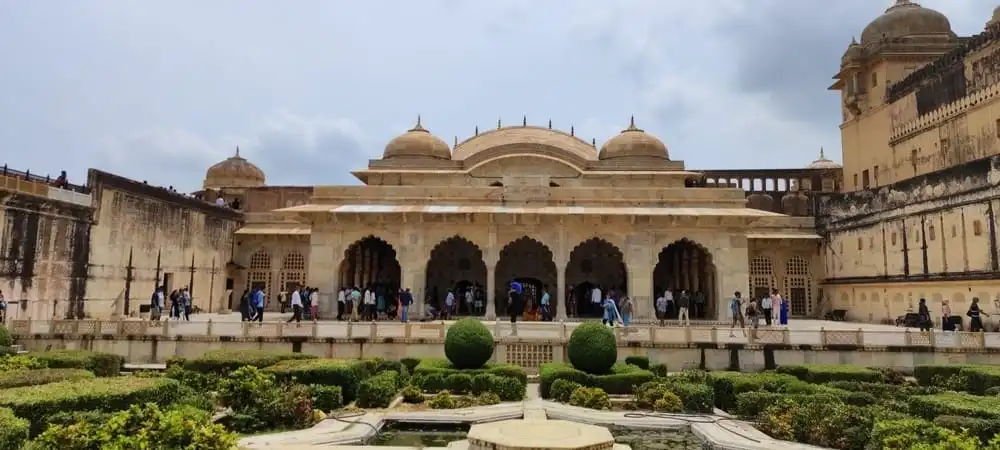
Gaitore Ki Chhatriyan: Jaipur’s Hidden Gem of Royal Memorials
Gaitore Ki Chhatriyan is a collection of cenotaphs (memorials) dedicated to the Maharajas of Jaipur and their royal families.
It sits just below Amer Fort, on the way to the fort. One can easily walk the short distance or take a tuktuk/auto.
These marble tombs are intricately carved and adorned with decorative elements. The cenotaphs are located in a tranquil garden with a peaceful atmosphere.
Timings: Open daily from 8:00 AM to 6:00 PM.
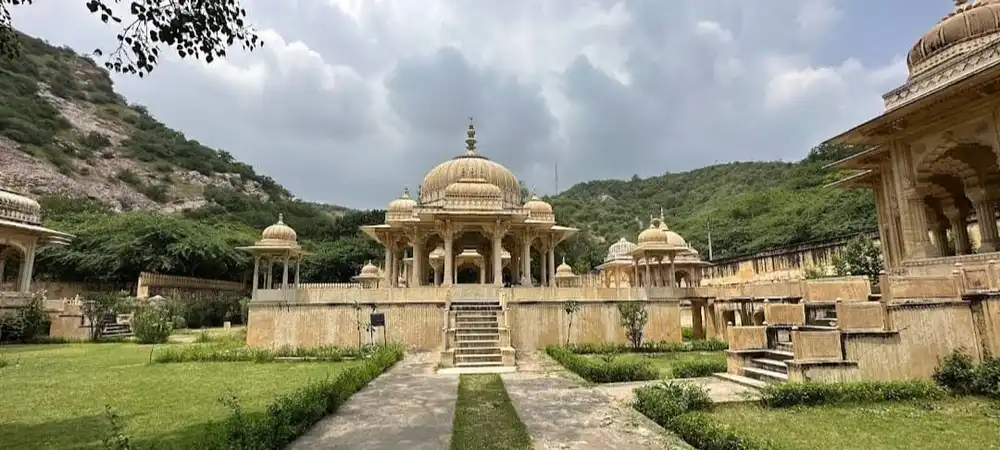
Jaigarh Fort: Majestic Fortress Overlooking Jaipur’s Royal Legacy
The fort was constructed, primarily to protect the Amer Fort. Maharaja Sawai Jai Singh II built it in 1726.
Jaigarh Fort showcases military precision in its design, with strong fortifications, massive walls, and a range of defensive features.
The fort divides into several sections.
The Jaivana Cannon is located in the cannon foundry. Experts believe this cannon is the largest of its kind in the world and could fire cannonballs weighing up to 50 kilograms. The Jaigarh Fort Museum houses a collection of royal weapons, coins, and artifacts related to the fort’s history.
Timings: Open daily from 9:00 AM to 5:00 PM.
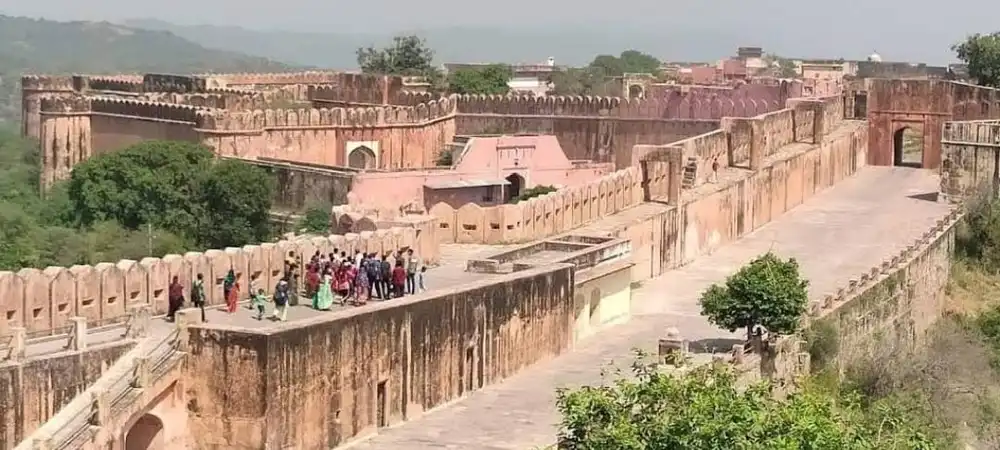
Majestic Views and Royal Charm of Nahargarh Fort:
Perched high on the Aravalli Hills, Nahargarh Fort offers breathtaking views of Jaipur. It served as a royal sanctuary away from the bustling city below. Nahargarh was strategically important in defending Jaipur.
Madhavendra Bhawan situated within the fort complex, was built by Sawai Madho Singh in the 19th century. The palace has nine identical suites for each of the king’s queens, connected by corridors and courtyards.
Padao Restaurant, located within the fort complex, is a popular spot for refreshments. The fort offers a stunning night ambiance, and dining here in the evening provides visitors with a beautiful view of the lit-up city below.
Timings: Open daily from 10:00 AM to 5:30 PM.

Explore the Majestic Jaipur City Palace:
The City Palace is a majestic complex, reflecting the grandeur and cultural heritage of the Rajput rulers.
Maharaja Sawai Jai Singh II, the founder of Jaipur, built it in between 1727 and 1734. It served as the administrative and ceremonial seat of the royal family.
The City Palace is divides into various sections, including the Mubarak Mahal, Chandra Mahal, Diwan-i-Khas, and Diwan-i-Aam.
The palace is open for visit from 9:30 AM to 5:00 PM daily, with some areas accessible until 8:00 PM for night viewing.
There is separate entry fees for Indian and foreign visitors.
One can opt to buy ticket via website or from offline counters.
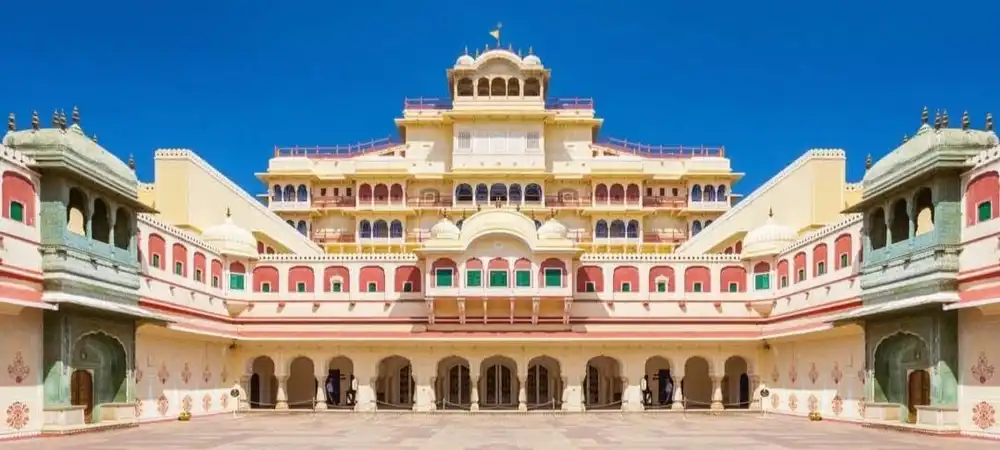
Jantar Mantar: A Marvel of Ancient Astronomy
The Jantar Mantar in Jaipur is a UNESCO World Heritage site and one of the most fascinating astronomical observatories in the world.
The best time to visit is during early morning or late afternoon, when shadows are optimal for observing the instruments.
Jantar Mantar is close to City Palace and Hawa Mahal.
Maharaja Sawai Jai Singh II built it in 1734. He constructed it as one of five observatories across India.
This Jantar Mantar is the largest and most well-preserved of them all. The Jantar Mantar boasts an impressive collection of nineteen architectural astronomical instruments designed to measure time, predict eclipses, and track celestial bodies.
One can visit it daily from 9:00 AM to 4:30 PM.

Hawa Mahal: Where Royal Elegance Meets Breezy Charm
The Hawa Mahal, or “Palace of Winds,” is one of Jaipur’s most iconic landmarks. Maharaja Sawai Pratap Singh built the Hawa Mahal in 1799.
Architect Lal Chand Ustad designed this five-story structure. It was built for the royal women, so that they could enjoy street festivals, while maintaining their privacy.
The Hawa Mahal is famous for its bee-hive design, featuring 953 small windows, or jharokhas, adorned with detailed latticework. The windows allow air to flow through the palace, providing natural cooling. The Mahal is made from red and pink sandstone.
It is open for visit from 9:00 AM to 5:00 PM. There is a nominal entry fee.
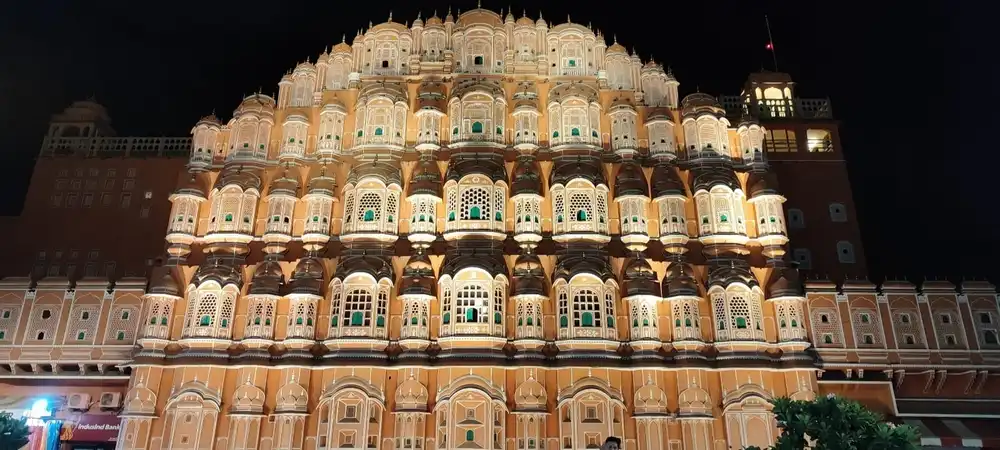
Step Into History at Albert Hall Museum:
The Albert Hall Museum in Jaipur, is the oldest museum in Rajasthan. It is an architectural marvel that stands as a testament to the region’s rich cultural heritage.
Sir Samuel Swinton Jacob designed the museum, which opened to the public in 1887. It is styled in classic Indo-Saracenic architecture, with intricate arches, domes, and a grand façade. It has a diverse collection of artifacts, featuring Egyptian Mummy, miniature paintings, arms, armor, pottery and ceramic art. Ram Niwas Garden, a beautiful public garden, surrounds the museum, providing a relaxing space for visitors.
Albert Hall museum remains open from 9:00 AM to 5:00 PM, with evening hours from 7:00 PM to 10:00 PM.
There is a nominal entry fee, with separate rates for Indian and foreign visitors.
The museum offers audio guides, which provide detailed insights into each artifact and exhibit.
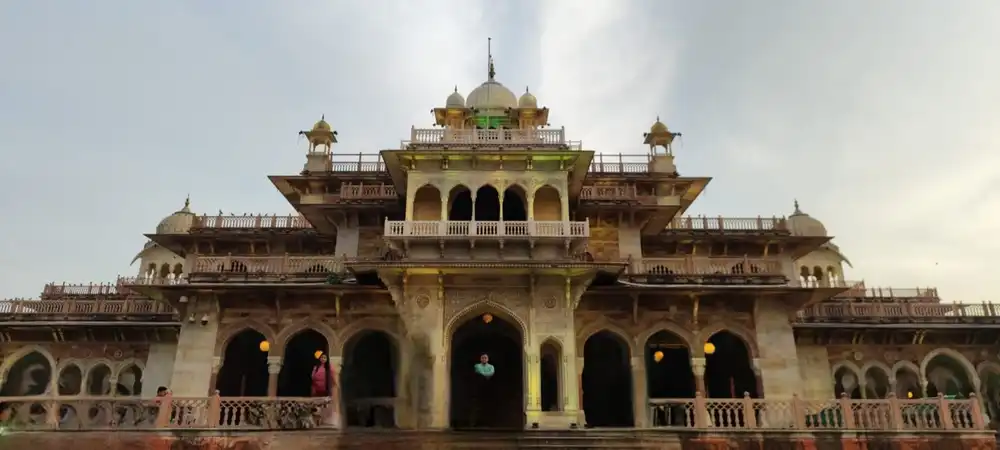
Jal Mahal: The Enchanting Water Palace of Jaipur
Jal Mahal, meaning “Water Palace,” is one of Jaipur’s most captivating architectural marvels, floating gracefully in the middle of Man Sagar Lake.
Built in the 18th century by Maharaja Madho Singh I as a royal retreat for duck hunting, this five-story palace showcases a fusion of Rajput and Mughal architectural styles. Interestingly, four of its floors remain submerged in water, leaving only the top level visible, creating a mesmerizing reflection on the lake’s surface.
While entry inside the palace is restricted, visitors can admire its beauty from the lakeshore, especially during sunrise and sunset, when it glows in golden hues.
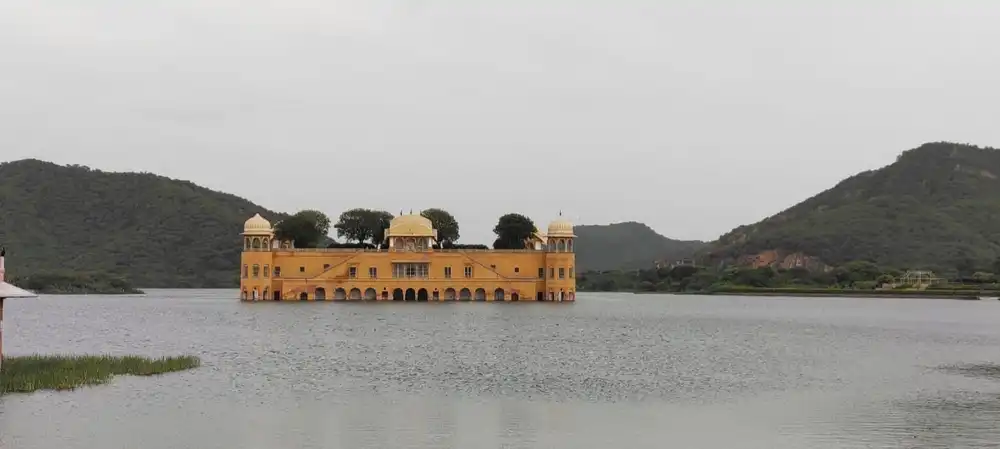
Culinary Journey Through Jaipur’s Flavorful Heritage
Ghewar at Laxmi Misthan Bhandar. They are also famous for kachori, mirchi vada, and jalebi.
Laal maas (spicy mutton curry) – Check out Handi Restaurant or 1135 AD (Amer Fort) or Niros Restaurant
Royal Rajasthani thali (with dal baati churma, ker sangri, gatte ki sabzi, and more) – Try at 1135 AD (Amer Fort)
One can try Mawa kachori from Rawat Misthan Bhandar.
A trip to Jaipur offers a captivating blend of history, culture, and architecture, with its stunning forts, palaces, and vibrant bazaars. From the majestic Amer Fort and Hawa Mahal to the serene Gaitore Ki Chhatriyan and the celestial wonders of Jantar Mantar, the city takes you on a journey through Rajasthan’s royal past. As you explore its rich heritage, indulge in traditional Rajasthani cuisine, and shop for handcrafted treasures, Jaipur promises to immerse you in the heart of India’s royal legacy, offering an unforgettable experience at every turn.

